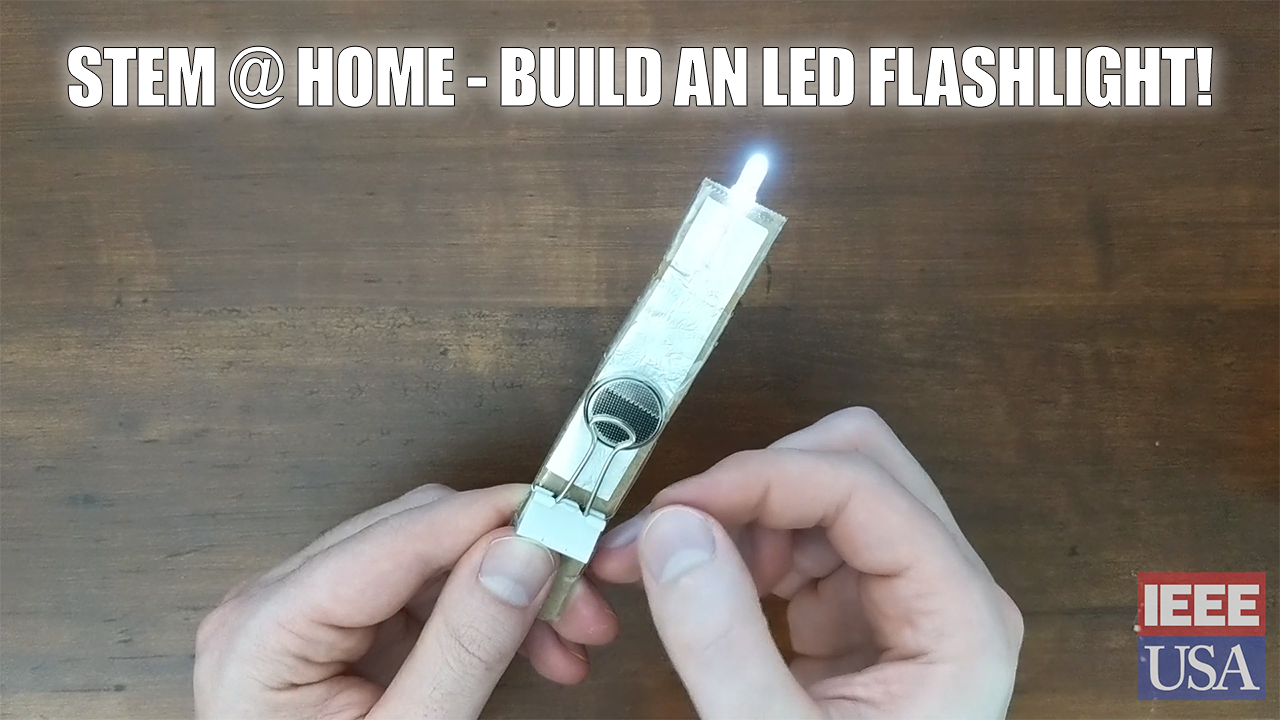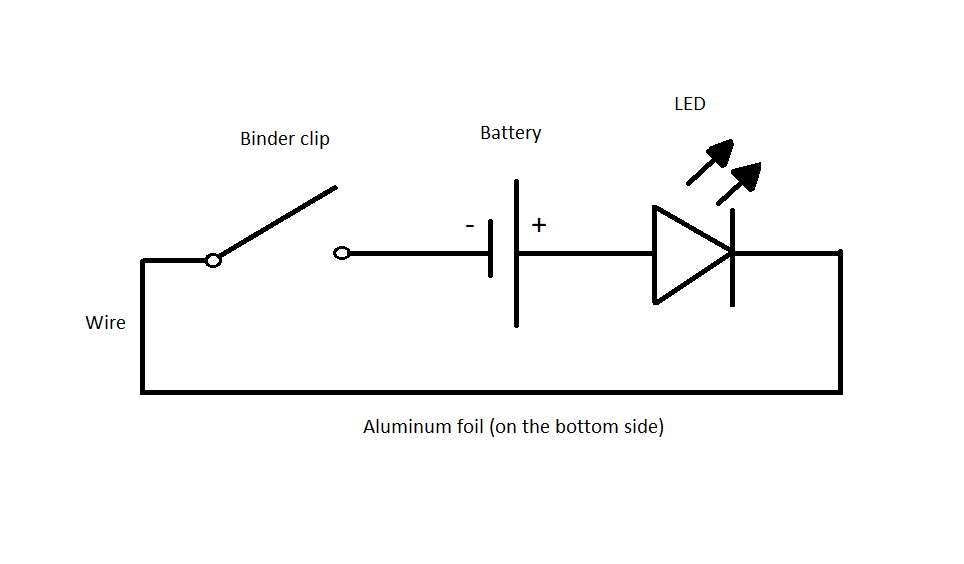This simple DIY LED flashlight is quick and easy to build with inexpensive parts that are commonly found at home. If you don’t already have all the parts in the list below, you can easily find them from online outlets like Amazon, or office supply stores like Staples.
Here’s what you’ll need:
- 1 x piece of corrugated cardboard about 1×6” or a large popsicle stick
- 2 x strips of aluminum foil (one almost as long as the piece of cardboard, and one a bit shorter)
- 1 x small metal binder clip
- 1 x thin, solid, bare wire about 4” long or a thin, flexible metal paper clip
- 1 x 3-volt coin cell battery, such as a CR2032
- 1 x white LED
- A few strips of tape (just regular tape will do)
- A hot glue gun and glue
To build the flashlight, follow the instructions found in the video embedded below (originally recorded for our booth at SciFest All Access) or via this link.
Experiment / Questions:
- What happens if you completely tape over the battery?
The LED will not light up when you lower the leg of the binder clip. This is because the tape is an insulator that prevents the flow of electricity. The metal binder clip and aluminum foil are conductors that allow electricity to flow, just like the wires in your home. - What happens if you attach the battery or the LED backwards?
The LED will not light up. This is because of polarity: an LED (Light-Emitting Diode) only allows electrical current to flow in one direction, from positive to negative. By reversing the battery or the LED, you’re trying to send current from negative to positive, so the LED won’t light up. But what if you reverse both the battery AND the LED? Now the circuit is flowing from positive to negative again, so your LED will light up!
Here’s what the flashlight looks like as a circuit diagram – a drawing of an electrical circuit using symbols (pictures) to represent each part. Can you find each of these pieces on the flashlight you built?
This diagram shows the flashlight with the leg of the binder clip raised. This is called an “open circuit” and the LED will not light up, because there is no conductive path for the electricity to flow. If you lower the binder clip leg onto the battery, you complete – or “close” – the circuit, electricity will flow, and the LED will light up!














